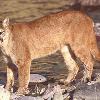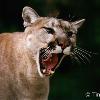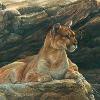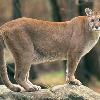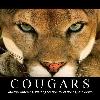

USDA National Wildlife Research Center media archives Tags: Cougar View |
If you run into a cougar your safest bet is to run This is particularly the case if you are in a situation that allows you to run in a surefooted fashion with even strides for instance on dry flat Tags: Cougar View |
Cougar of the Day Patricia Heaton 50 Back on March 4 1958 a cougar was born Well not an actual full blown cougar but a baby that would later in her life become the cougar that she is today That s right Patricia Heaton Tags: Cougar View |
|||||||||
http www jonijohnsongodsy com images originals 0041 Racoon jpg http www jonijohnsongodsy com images buttons home rollover gif http www jonijohnsongodsy com images originals 0024 Cougar jpg http www jonijohnsongodsy com images originals 0014 rabbit jpg Tags: Cougar View |
By Spirit Fingers Here are the answers to Monday s puzzle corner 1 The Graduate Tags: Cougar View |
Tags: Cougar View |
|||||||||
Tags: Cougar View |
P. concolor binomial = Puma concolor binomial_authority = (Linnaeus (Carolus Linnaeus), 1771) range_map = Puma concolor Location Map.svg range_map_caption = Cougar range
The cougar (Puma concolor), also known as puma, mountain lion, mountain cat, catamount or panther, depending on the region, is a mammal of the family Felidae, native to the Americas. This large, solitary cat has the greatest range (range (biology)) of any large wild terrestrial mammal in the Western Hemisphere, extending from Yukon in Canada to the southern Andes of South America. An adaptable, generalist (Generalist and specialist species) species, the cougar is found in every major American (the Americas) habitat (habitat (ecology)) type. It is the second heaviest cat in the American continents after the jaguar. Although large, the cougar is most closely related to smaller felines.
A capable stalk-and-ambush predator, the cougar pursues a wide variety of prey. Primary food sources include ungulates such as deer, elk, moose, and bighorn sheep, as well as domestic cattle, horses and sheep (Domestic sheep), particularly in the northern part of its range. It will also hunt species as small as insects and rodents. This cat prefers habitats with dense underbrush and rocky areas for stalking, but it can also live in open areas. The cougar is territorial (Territory (animal)) and persists at low population densities. Individual territory sizes depend on terrain, vegetation, and abundance of prey. While it is a large predator, it is not always the dominant species (Apex predator) in its range, as when it competes for prey with other predators such as the jaguar, grey wolf, American Black Bear, and the grizzly bear. It is a reclusive cat and usually avoids people. Attacks on humans (List of fatal cougar attacks in North America by decade) remain rare, despite a recent increase in frequency.
Due to excessive hunting following the European colonization of the Americas and the continuing human development of cougar habitat, populations have dropped in most parts of its historical range. In particular, the cougar was extirpated (Local extinction) in eastern North America, except for an isolated sub-population in Florida (Florida panther); there are many sightings that claim the animal is recolonizing parts of its former eastern territory, such as Maine and northern Michigan where there have been recent sightings. In North America, the cougar is native to Western Canada (primarily British Columbia and Yukon), Washington (Washington (U.S. state)), Oregon and Northern California. Oregon alone is home to more than 5,000 cougars, with the highest densities in the Blue Mountains (Blue Mountains (Oregon)) in the northeastern part of the state and in the southwestern Cascade Mountains. Their primary food source here is deer, but they will also consume elk, raccoons, bighorn sheep, and other mammals and birds.
Cougars are territorial animals and maintain home ranges of up to 100 miles. Most active at dawn and dusk, they are lone hunters. They are generally solitary animals, except for mothers who remain with kittens for about two years. While actual cougar sightings have increased, coyotes, bobcats, and dogs are often mistaken for cougars. A cougar can be identified by its large size, cat-like appearance, consistent tan or tawny body color, and long tail. An adult cougars tail is nearly three feet long and can be a third to a half of its total length. Cougar tracks can be differentiated from dog tracks by paying attention to detail. The cougar has recently made a comeback in the state of Wyoming, where it presently has the largest population in North AmericaCitation neededdate=October 2009.
Fossil Range: Middle Pleistocene to Recent
Trend: down
Status System: iucn3.1
Regnum: Animalia
Phylum: Chordata (Chordate)
Classis: Mammalia
Ordo: Carnivora
Familia: Felidae
Genus: ''Puma (Puma (genus))''

